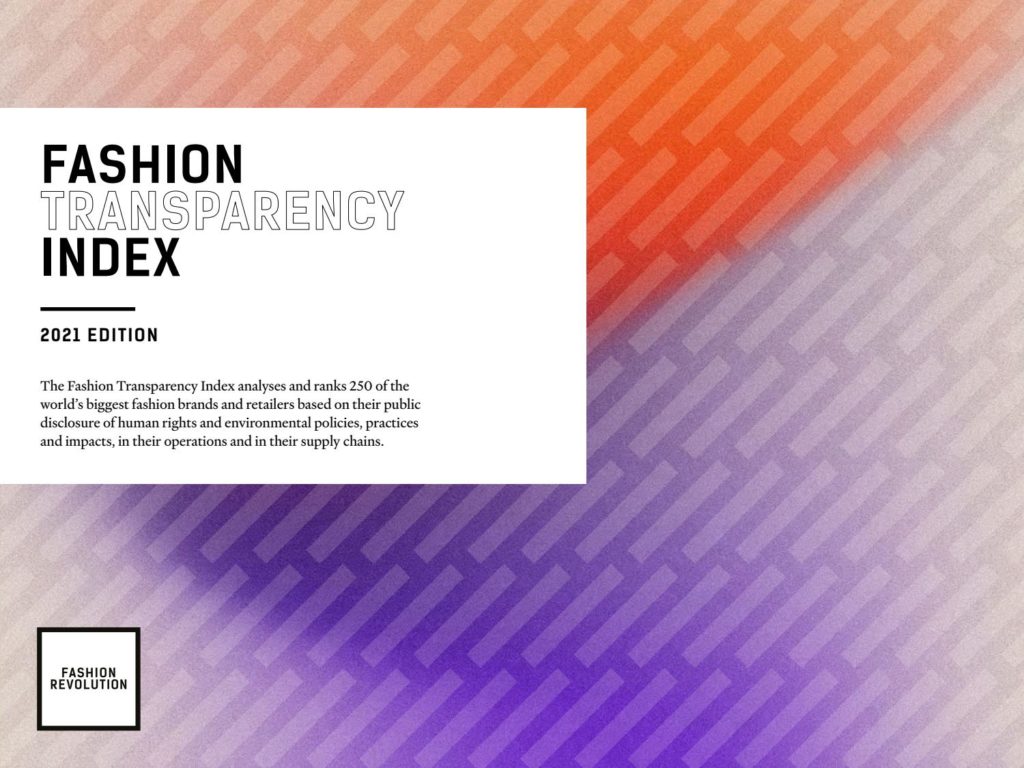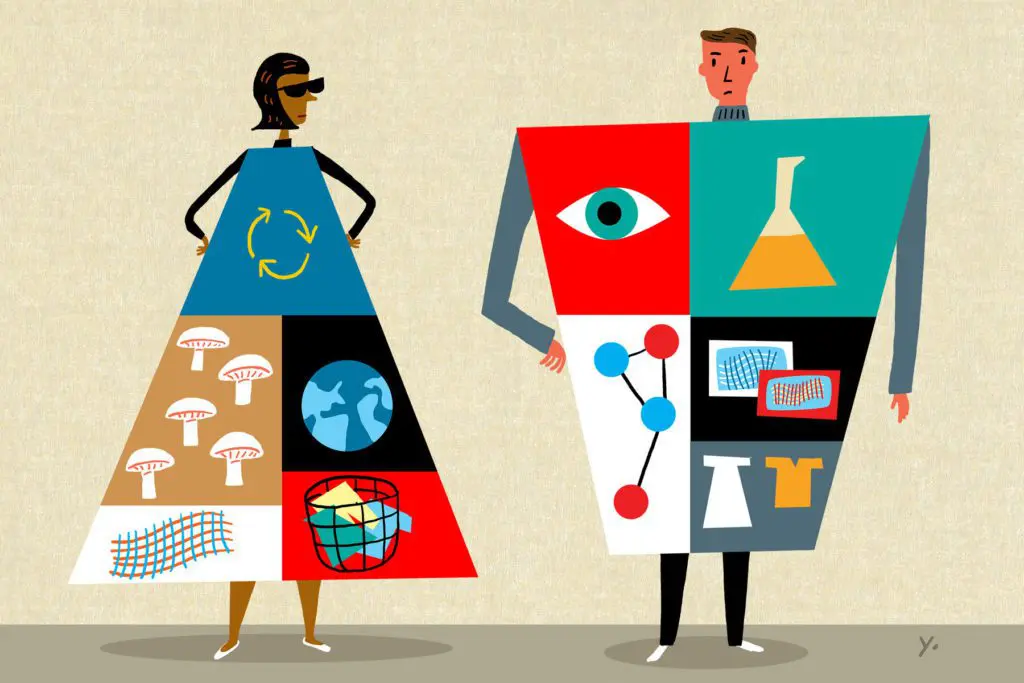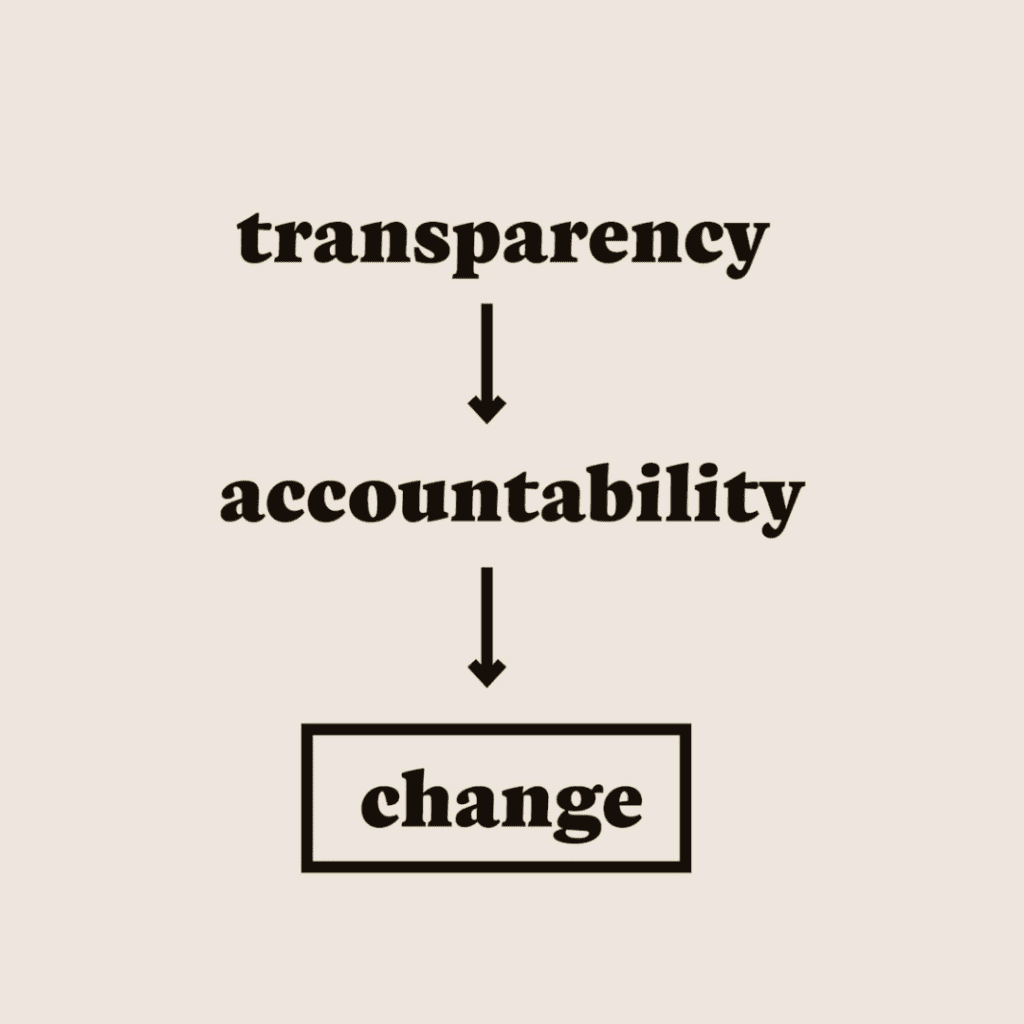The truth of how fashion brands produce their clothing is often hidden from consumers. Currently, there is little to no disclosure regarding environmental and human rights policies, barring a few vague lines in a company’s “About” section.
Fashion Revolution’s 6th annual Transparency Index provides a comprehensive analysis and ranking of 250 of the world’s top fashion brands, using 239 indicators from a myriad of topics including biodiversity, chemicals, supplier disclosure, animal welfare, etc. From this Index, we can gauge where the fashion industry stands on the road to sustainability and how much farther we have to go.

But first, what is transparency? Why is it important?
First, traceability is the comprehensible and comparable information about supply chains, business practices, and the impacts of these practices on workers, communities, and the environment. Essentially, who did what and where – from harvesting the cotton all the way to who sewed the shirt together. Transparency is then the step of documenting and publishing all this dug-up info in a readily accessible way. Ideally, any individual could find out the complete and unabridged report of a company’s supply chain in just a few clicks away from the company’s website homepage.
Primarily, the purpose of transparency is to keep brands accountable. By ranking brands based on their success in meeting these factors, the Index uncovers how objectively successful brands are at meeting various sustainability goals. In this age of greenwashing – where the most sustainable decisions a brand makes may be inserting buzzwords like “circular” and “carbon neutral” into advertisements for a new line of jeans – transparency is the first step in encouraging brands to make an impactful change. And while it’s great for consumers to understand the supply chain, it’s nothing short of absolutely necessary for investors, lawmakers, NGOs, and trade unions to understand company supply chains so they can hold brands accountable and push for change. Transparency reports enable brands to collaborate with the aforementioned officials and begin to remedy environmental and human rights issues.
The Present Murkiness
Wading through more than 250 brand reports, Fashion Revolution illuminates the many tactics that brands may be deliberately using to hinder total transparency. The Index reveals that rather than complete omission, many large brands render their reports convoluted and inaccessible through information overload, data dumping, and purposely misleading information. Other brands are culprits of hiding critical information in footnotes and annexes of lengthy reports. This makes it extremely difficult for stakeholders and consumers to interpret and judge a brand on its actions.
Other brands are accused of repeating brand values in place of providing substantial reports or unveiling very limited portions of the supply chain. Only 14% of major brands report the average quantity of products created annually, rendering it difficult for us to understand the scale of overproduction. Consequently, related research has revealed that only 18% of consumers currently believe a brand’s sustainability report. While most carbon emissions occur at processing and raw material levels, only 26% of carbon emissions at a processing and manufacturing level and 17% at a raw material level are revealed.
Not all hope’s been lost, however. 27% of brands disclosed their processing facilities, up from 24% from last year. 11% of major brands revealed their raw material suppliers, up from 7% last year.
Changes Must Be Made Now

While some progress has been made, the UN’s latest IPCC report issues an unequivocal warning towards fashion brands – current climate action efforts remain far below the line they must be at in order to reach the industry’s climate goals. Scientists are more certain than ever that human activity is the cause of the natural disasters and acute weather events that have cropped up in recent years. Yet despite environmental worry snowballing every year, too many brands still lack a sense of urgency.
Though many have laid out high-reaching goals, such as reducing emissions by 70 percent per unit value (Kering) or creating goals to be climate positive by 2040 (Burberry), Vogue Business reports most lack the tangible plans to meet these goals. Too many brands still stagger around making tweaks to individual garments or collections without revealing how they plan to reduce the impacts across their supply chain as a whole. What’s more alarming is brands with any progressive environmental goals at all are still in the minority.
Transparency isn’t the ultimate fix or even a temporary bandage. It’s a vital first step that must be taken in order to work towards a sustainable future. Experts reiterate the same ideas most eco-conscious people have known for decades – ideas such across the entire supply chain, and business model need to be redesigned in order to prioritize climate action over profits.
Left to their own devices, brands will be led astray by ideas of profits and expansion. The responsibility then falls on us, as responsible consumers to push brands to prioritize transparency. Sign petitions. Email brands. Tweet at your favourite brands. Change can and must be made now.

